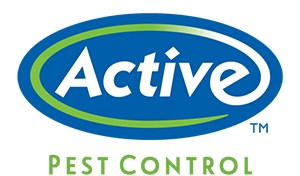How to Get Rid of Fleas
Serving Atlanta Metro | Columbus | Augusta | Savannah

The best method of flea control is to take measures to prevent them in the first place. This makes it crucial to be able to identify signs of the fleas, including the best ways to check for them on your pets or in your home. Two of the best ways to put a stop to an ongoing flea infestation are to clean your home regularly and take your pets to the vet.
Keep reading to learn about Active Pest Control’ tips to help get rid of fleas in your home.
Preventing Fleas On Your Own
Fleas are a serious nuisance, but they can be easily prevented by taking certain precautions. These include:
- Keeping watch of your pets: If you noticed an increased amount of itching or unsettled behavior from your pets, check for flea bites on their skin. Dogs can easily pick up fleas from outside and bring them into your home.
- Apply insect repellent: It’s recommended to use an insect spray containing at least 20% DEET on exposed skin to help deter fleas. Follow the manufacturer’s instructions on the label when applying.
- Keep your yard tidy: Fleas love to seek shelter in densely vegetated areas, even in your own backyard. Trim your grass, prune your bushes and shrubs, organize piles of wood, and clean up debris to eliminate potential flea hiding places.
- Prevent wildlife problems: Raccoons, coyotes, deer, opossums, bobcats, foxes, and skunks are all known to carry fleas and drop off flea eggs and larvae in your yard.
Say Goodbye to Pest Problems for Good!
How to Get Rid of Fleas in the House
To keep everyone in your home safe from flea bites, it’s important to learn the steps that you can take to get rid of fleas naturally:
- Take your pets to the vet. They can recommend the right flea control products that will safeguard your cats and dogs from fleas.
- Wash all bedding often. If you suspect that there are fleas in your home, run your laundry, sheets, and pet bedding through a hot wash cycle.
- Clean and vacuum thoroughly. Vacuum all areas of the home including upholstery. Carefully dispose of vacuum bags.
Protection Against Fleas in Atlanta GA
Knowing that you have fleas in your home can make for an unsafe and anxious environment. It is important to take quick action to get rid of the infestation. For flea extermination help or advice on how to get rid of fleas, trust in the experts at Active Pest Control for assistance. Contact us today to learn more!
Back to Flea Exterminators, Control & RemovalHow to Get Rid of Fleas in Georgia
Serving Your Pest Needs for Over 35 Years Across Georgia

